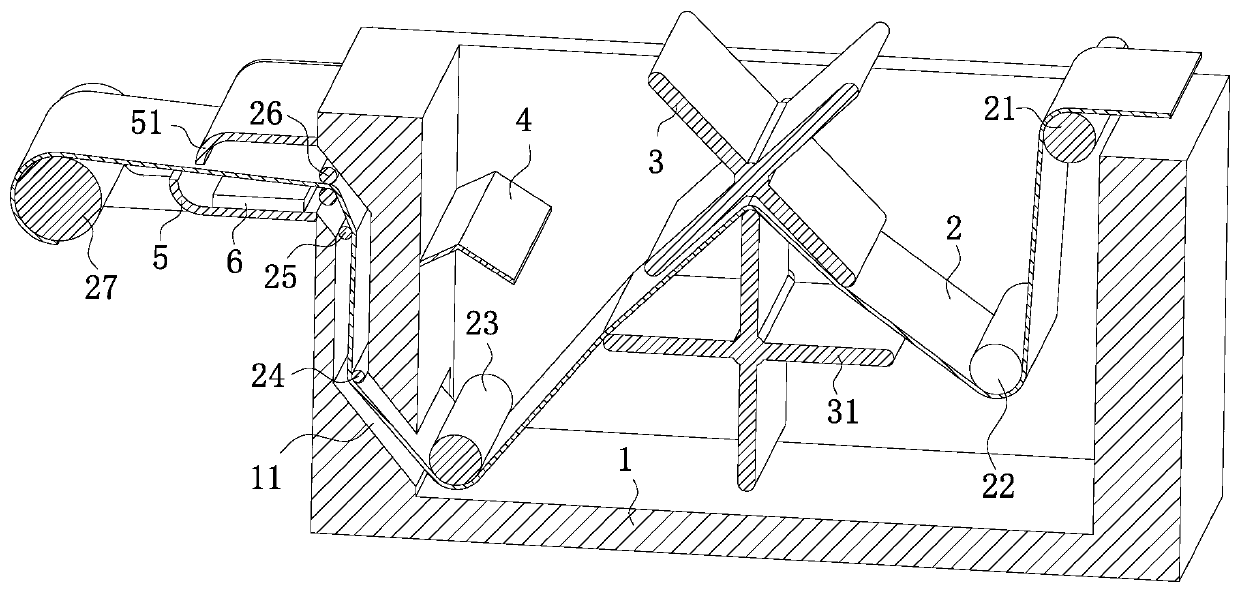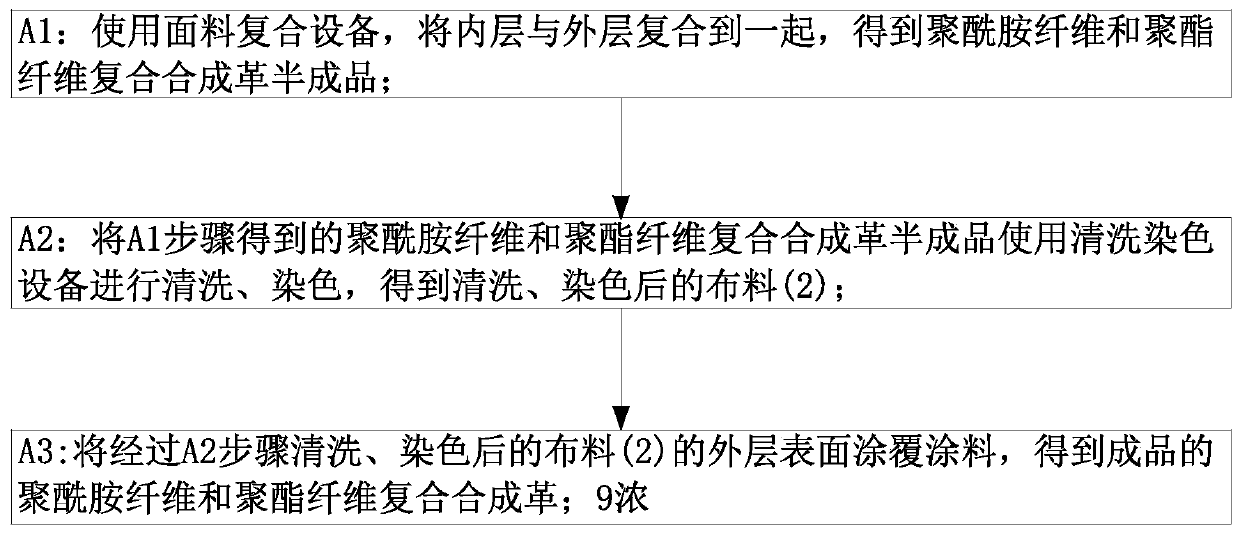Polyamide fiber and polyester fiber compounded synthetic leather and processing process
A technology of polyamide fiber and polyester fiber, applied in the direction of fiber type, fiber treatment, fiber chemical characteristics, etc., can solve problems such as interference with the normal operation of electronic equipment, hidden safety hazards, etc., to reduce labor costs, reduce labor intensity, and achieve uniform dyeing Effect
- Summary
- Abstract
- Description
- Claims
- Application Information
AI Technical Summary
Problems solved by technology
Method used
Image
Examples
preparation example Construction
[0041] The preparation process of the outer layer comprises the following steps:
[0042] S1: Mix and copolymerize polyester fiber, oligomer polyethylene glycol, and diethylaminoethyl methacrylate in proportion, including 25-30 parts of polyester fiber, 6-8 parts of oligomer polyethylene glycol, 5 to 8 parts of diethylaminoethyl acrylate, obtained composite fibers by spinning, and soaked the composite fibers in an aqueous solution of polyacrylate antistatic agent and polyoxyethylene ether nonionic antistatic agent for a long time For 10-15 hours, after soaking, take it out and dry it naturally at room temperature to collect antistatic fibers;
[0043] S2: adding an appropriate amount of oligomer polyethylene glycol to the antistatic fiber obtained in S1 to melt into a melt to obtain an antistatic solution, wherein 7 to 8 parts of oligomer polyethylene glycol;
[0044] S3: mixing and melting polyamide fiber and oligomer polyethylene glycol according to a certain ratio to obtai...
specific Embodiment approach
[0048] As a specific embodiment of the present invention, the hydrophilic fiber is one or more of silk, rabbit hair, camel hair, cotton, and hemp; the softening agent is amino-modified silicone, and the surfactant Is the amphoteric surfactant dodecyl ethoxy sulfobetaine;
[0049] Among them, the treatment of the amino-modified silicone softener improves the performance of the hydrophilic fiber, makes the hydrophilic fiber have better softness, reduces the friction between the hydrophilic fibers, reduces the static electricity of the fiber, and makes the hydrophilic fiber stretch Two, it is not easy to bond into agglomerates, improve the antistatic properties of hydrophilic fibers, and at the same time, the treatment of hydrophilic fibers with dodecyl ethoxy sulfobetaine surfactant improves the surface properties of hydrophilic fibers and makes hydrophilic fibers The performance is improved. At the same time, the surface of the hydrophilic fiber is treated with a branched chain...
PUM
 Login to View More
Login to View More Abstract
Description
Claims
Application Information
 Login to View More
Login to View More - R&D
- Intellectual Property
- Life Sciences
- Materials
- Tech Scout
- Unparalleled Data Quality
- Higher Quality Content
- 60% Fewer Hallucinations
Browse by: Latest US Patents, China's latest patents, Technical Efficacy Thesaurus, Application Domain, Technology Topic, Popular Technical Reports.
© 2025 PatSnap. All rights reserved.Legal|Privacy policy|Modern Slavery Act Transparency Statement|Sitemap|About US| Contact US: help@patsnap.com



